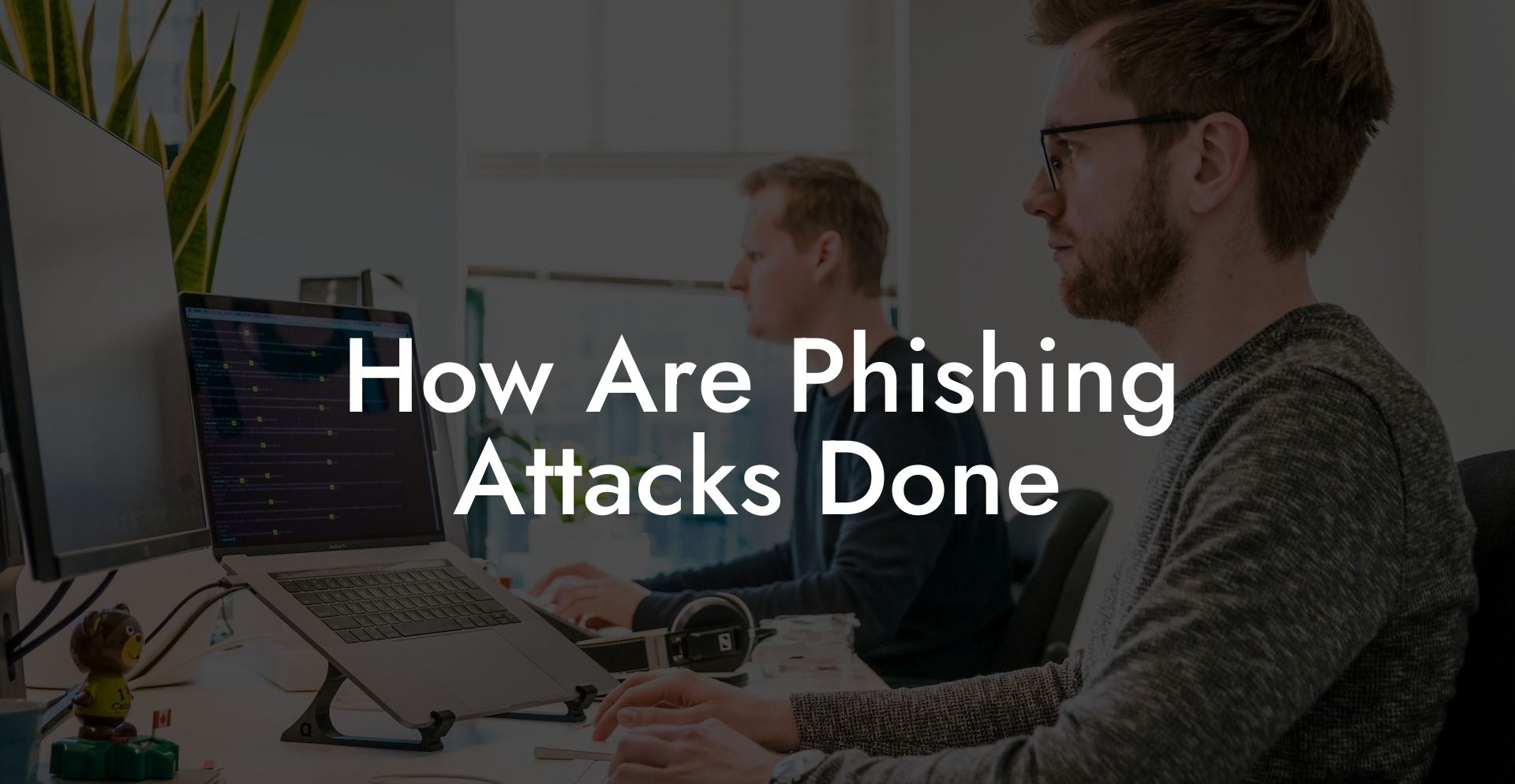In today's digital age, phishing attacks are becoming increasingly common and sophisticated. Scammers use these attacks to trick innocent people into revealing sensitive information or conning them out of their hard-earned money. As technology evolves, so do the techniques used by cybercriminals, making it essential for everyone to stay informed and proactive in protecting themselves. In this guide, we will explore how phishing attacks are carried out, the various methods used, and how you can protect yourself from falling victim to these scams.
How Are Phishing Attacks Done Table of Contents
Phishing attacks are fraudulent attempts to gather sensitive information from individuals or organizations by posing as a trustworthy entity through electronic communication channels, such as email, social media, texting or even phone calls. Common targets include login credentials, financial account information, and personal data.
These attacks typically involve the following phases:
Protect Your Data Today With a Secure Password Manager. Our Top Password Managers:
1. Research: Scammers begin by gathering information about the target, such as names, email addresses, phone numbers, and other relevant details. They can obtain this data in various ways, including hacking databases or buying it from other criminals.
2. Crafting: Once they have the necessary information, scammers create a convincing message or bait, which is tailored to the target's interests, fears, or desires. They often use social engineering tactics, such as claiming to represent a bank or online service, to manipulate the victim into revealing information.
3. Delivery: The bait is sent to the target via email, text message, or social media platforms. Scammers will often spoof the sender's address or use a similar-looking domain name to appear legitimate.
4. Interaction: The victim unwittingly interacts with the message or the provided link, usually downloading a malicious file or entering sensitive information into a fake login page.
5. Collection: The scammer collects the sensitive data, which can then be used for identity theft, financial fraud, or other criminal purposes.
While all phishing attacks involve the same basic steps, the methods used can vary. Some common forms of phishing techniques include:
1. Email Phishing: This is the most prevalent type of phishing attack, where scammers send seemingly legitimate and urgent emails requesting the recipient's private information or prompting them to click on a malicious link.
2. Spear Phishing: This is a more targeted form of phishing, where the scammer has done their research on the target and tailors the message around their personal wants, needs, or fears.
3. Clone Phishing: In this method, the attacker replicates a previous and legitimate email, replacing the original content or link with a malicious one before sending it to unsuspecting recipients.
4. Smishing (SMS Phishing): This technique leverages text messages to carry out phishing attacks. Victims are lured into clicking on malicious links or calling scammer-operated phone numbers.
How Are Phishing Attacks Done Example
John receives an email appearing to be from his bank, stating they've detected suspicious activity on his account. The message prompts him to click a link to verify his information, supposedly for security purposes. The link redirects John to a website that looks identical to his bank's official site. Unaware of the scam, he enters his login information and inadvertently provides the scammers with access to his entire bank account.
Phishing attacks prey on people's trust and fears, often causing serious financial and emotional consequences. Being proactive in learning about these scams and understanding the techniques used can help you avoid becoming a victim. Share this article with friends, family members, or coworkers to spread awareness and ensure that we all stay safe in our digital lives. Lastly, don't forget to browse our other guides on Voice Phishing to learn more about different types of scams and effective ways to protect yourself.
Protect Your Data Today With a Secure Password Manager. Our Top Password Managers:















